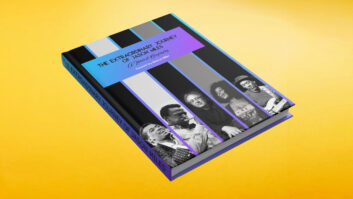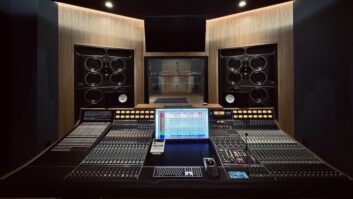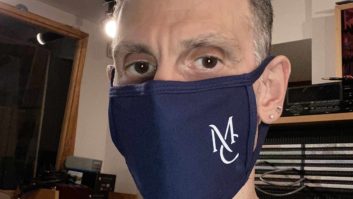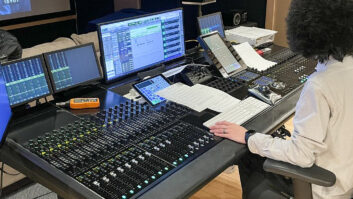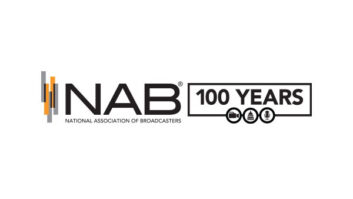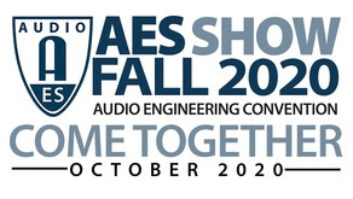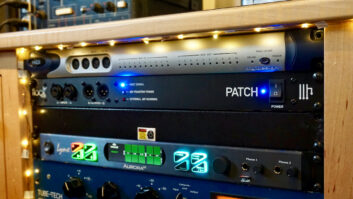


A selection of screen grabs from the SXSW 2011 live stream
True, many mid-level bands find themselves on 200-plus-dates-a-year tours, finding that ticket sales and merch provide the majority of their income. But with ever-increasing ticket prices—not to mention the soaring cost of fuel—is this traditional touring model really able to keep the cash flow coming in? Factor in that an artist just can’t hit all of the spots across the map on their tour; it’s just not feasible. So why not tackle both issues with one fell swoop—stream your concert, online, in high-resolution audio and video to a much larger, global audience.
This trend is in no way going to replace the physical tour; fans still want to experience that live feel, that excitement that only comes from waiting in line, checking out the opening act and then—finally—their favorite band hits the stage. But, especially in a festival situation, streaming a concert online sure does make financial sense.
We recently spoke with XI Media’s (Austin) owner/producer Dusty Kraatz and audio director John Riddle about their massive undertaking of live audio and video streaming from six different stages—Fader Fort tent, streams for NPR and those for Rolling Stone—at the recent four-day SXSW. The Fader Fort stream alone saw 1.6 million views managed through MySpace, which has a relationship with content delivery network Akamai to handle any bandwidth issues.
THE SETUP
While Kraatz and Riddle would prefer to have a clean view of the stage or front-of-house to craft the live mix, at SXSW they found themselves in less-than-ideal locales. “We were always set up away from the stages,” Riddle says. “At the Fader Fort, we were in a production trailer behind the stage. At the Rolling Stone shows, we were in a separate hallway with partitions. For the NPR shows, we were located with all of the NPR staff, where we actually had a view from front of house.”
And while close proximity to FOH is optimum, they are quick to point out that they are relatively “invisible” to the show’s live sound engineers. To ensure that they are getting everything they need to put out a high-quality stream, the team works closely with the location house crew, particularly when they are charged with multitracking the shows. “We would have to interface with their patch engineer and their monitor engineer to make sure that we were getting the correct patching,” explains Riddle.
For the Fader Fort shows, they received separate stems from the FOH Avid console so that Riddle’s engineer could mix the stereo drums, stereo guitars, stereo instruments, bass, mono vocal and stereo audience or house mics for the live stream. “Then those would also be processed in the box on our end,” Riddle says. “We were using Metric Halo ULN-2 and 2882 interfaces to take those stems and the house mics, and then mix them all together and do some post-processing that would be used to tailor it to the broadcast feed. Then we would send a stereo feed to the Tricaster broadcast switcher and we’d also be recording all of the individual stems and the broadcast stereo feed to hard disk.” Monitoring was via ADAM A5X and Etymotic in-ears so they could do some sound separation.
“At the Rolling Stone shows, we were running a full split with multitracking. We took the split [from the stage] into PreSonus Digimax LT pre’s and then ADAT out of those into an Alesis HD24XR recorder. We then ran analog out of the HD24 into a Midas Verona 24-channel console for mixing and sent the stereo out to broadcast. We also backed up that stereo mix with a Zoom H4 recorder.” Monitoring was via Sony 7506 and Etymotic headphones.

Audio director John Riddle mixing during Matador at 21 in Las Vegas in October 2010.

Justin McKee directing one of more than 30 acts at the Fader Fort.

Ryan McLain mixing during a Rolling Stone event. Also featured are crew members Adam Rothlein, Robert Caulder and Lauren Schall King.
DOWN THE LINE
For each stream, the engineers continually “patch in” to different portions to ensure that the audio is of the highest quality possible. On some gigs, there are just two audio crewmembers—an engineer and a tech—handling the many quality checkpoints. “On the video end, a lot of people have the misconception that there’s automatically going to be an audio sync issue and that has yet to happen,” Kraatz says. “As far as drop-outs [occurring], as long as we’re managing our workflow and all the cables are plugged in, we’ve never had an issue.
“Our engineers are checking audio down the line,” he continues. “At that point where we were recording our full HD master, the engineer basically has to be mobile because they’re managing the mix, but they’re also making sure that it’s going all the way through the line and out to the stream. So we had them checking at different reference points to make sure that the audio was not getting squished. And then we’d also have the stream up on a laptop for our director to monitor; we’d have the engineer plug into that laptop to check, as well.”
Riddle adds: “You want to build as much redundancy as possible into your signal flow. But there’s always a balance there between client budget and what we’re able to support with equipment because our client base is in that middle ground where they don’t necessarily have the budget to bring out a full broadcast audio truck that has full redundancy. We’re able to bring a really high-quality product to them at a lower budget, but some of the tradeoff has been reduced redundancy.”
But what XI Media won’t allow a trade-off on is audio quality. Despite the fact that the stream is going over the Web, they’re pushing out 128 kilobytes/second, audio-wise. At the SXSW shows, XI Media partnered with Kulabyte to use its XStreamLive video encoders and Hyperstream, a cloud-based video-transcoding technology. Hyperstream allowed XI Media to take any connection—2 MB/second and up—so that they could send one full HD stream with the audio embedded. In this way, they were able to do a 900 or 1,200k stream, plus the audio at 128. Hyperstream would then take that one feed and split it up as many ways as possible [to support multiple end-user devices]. “That enabled us to take the NPR feed—at least a 2MB upload speed for all of our connections—and we pumped out one feed,” Kraatz says. “We could do a full-range dynamic setting for our end-users and offer the highest-quality possible.”
“One of the challenges there,” adds Riddle, “is that you’re mixing so that it will translate to a much lower bit rate. You may get your 128, but you may only get 64. There’s plenty of times where I’m monitoring off my iPhone, watching the stream, just to see how it’s sounding for that audience.”
BUILDING A BETTER STREAM
This growing field is truly interdisciplinary as the engineers are doing location recording and live mixing, and as such, Riddle finds that he’s building a hybrid system to meet his requirements. As of today, the gear he needs to make his job easier is more skewed to the install broadcast market. Ideally, he says, if manufacturers were to keep their eyes toward this growing market, he’d like to see a piece of equipment that would combine multitrack recording along with internal processing and mixing capabilities. “When I’m running a show,” he says, “the closest thing that I’ve found is the Metric Halo equipment. The only ‘gotcha’ there is the software mixing: It’s great that it has all of the processing onboard, but as far as being able to mix with all of those boxes, it’s a little bit cumbersome because they don’t communicate with each other and you’re still relying on a computer-based system. So anytime you can get a dedicated product that doesn’t rely on a multipurpose operation system, it’s going to be more reliable generally. I’d like to see something that has hardware controlling with DSP and the recording capability—all in one box—that doesn’t rely on interfacing into a computer, which is usually the most unreliable part of the equation.”
And manufacturers should be looking toward this burgeoning market as there are dollars to be found, especially when these concerts and streams are funded by a corporation. Say a concert is held at a venue that holds 500 people. Now with the live streaming capabilities, that number can easily jump up to 50,000 and upward—or 1.6 million viewers for the Fader Fort streams alone. That many eyeballs viewing the artist, viewing the corporate brand. “That will help grow the market and then the manufacturers will follow as there is more and more demand,” Kraatz says. “Every different event I do is a laundry list of ideal equipment for that show, but it is not feasible as a purchaser or a renter to get all of it. This is one of the avenues where there will be some money involved in the equation to bring music to people—in live sound and now live sound with streaming. The streaming events create excitement and buzz. All those fans [watching the stream] become a global unit sharing the same experience. Being able to see the global scope and scale, and knowing that not only are those eyeballs seeing and ears hearing what we’re doing, but also knowing that that many people all across the globe are able to participate with their favorite band—that’ll never go away; it’ll only grow.”
Sarah Benzuly is
Mix
’s managing editor.

